Estudio Pedro Reyes
Project Status: Completed
Project Year: 2018
Client: Pedro Reyes
Area: 1,152 m2
Location: Mexico City
Design: MCxA, Pedro Reyes
Construction: Taller A
Team: Mauricio Ceballos, Francisco Vázquez, Pablo Kobayashi, Tridim, SaadProject Status: Completed
Project Year: 2018
Client: Pedro Reyes
Area: 1,152 m2
Location: Mexico City
Design: MCxA, Pedro Reyes
Construction: Taller A
Team: Mauricio Ceballos, Francisco Vázquez, Pablo Kobayashi, Tridim, Saad
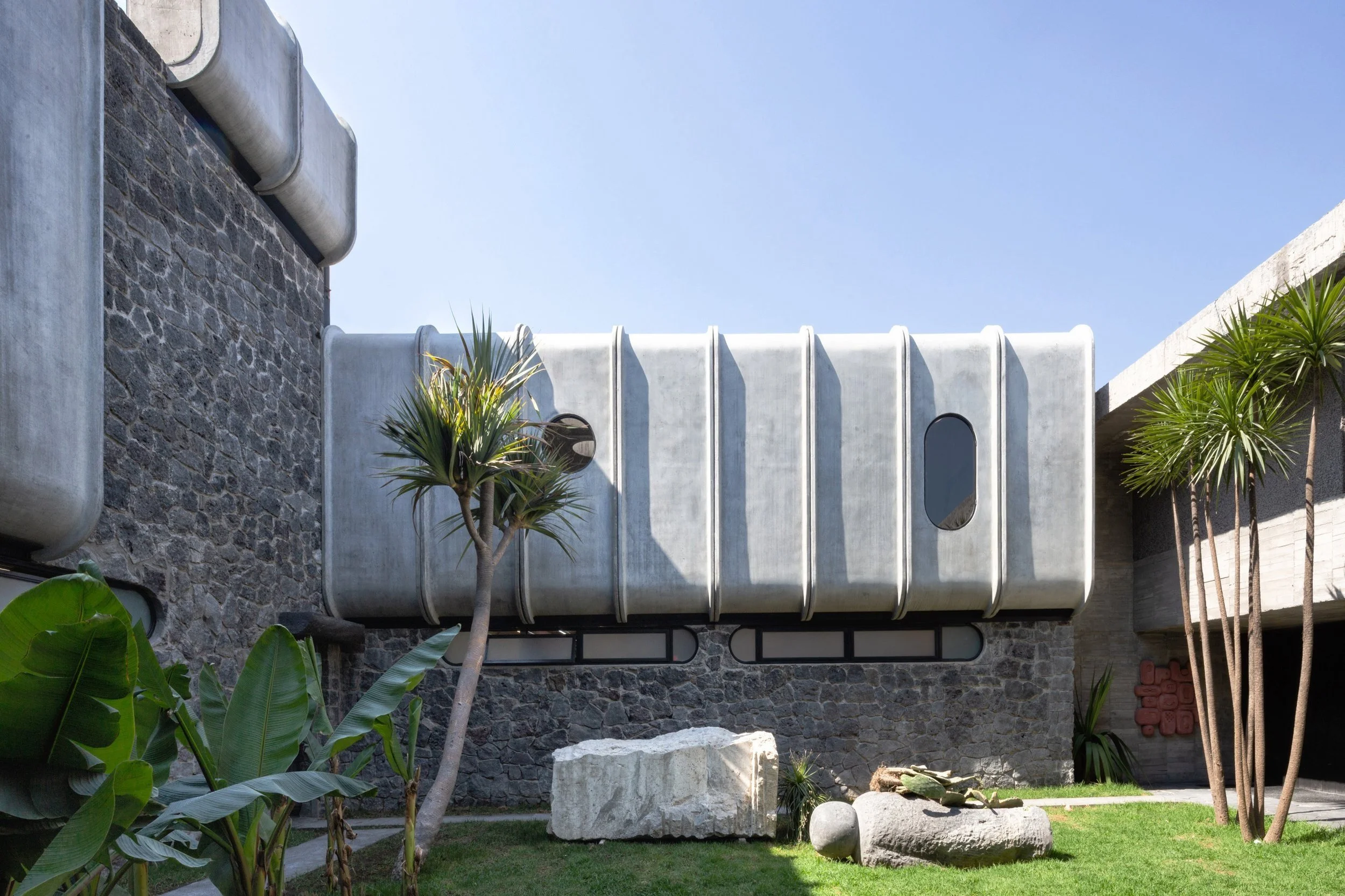
Context
Pedro Reyes is a Mexican artist whose practice defies conventional boundaries, encompassing sculpture, architecture, video, performance, and participatory art within a truly multidisciplinary approach. His artistic vision is fundamentally driven by a commitment to empowerment, seeking to enable individuals and communities to engage meaningfully with social, environmental, political, and educational challenges. This activist dimension of his practice requires not merely a space for creation, but a building that embodies his values and supports the ambitious scope of his work.
The project to design Reyes's studio and workshop emerged from a complex set of requirements that reflected both his artistic needs and his ethical commitments. The location in Coyoacán, a colonial neighborhood rich in architectural history, presented the challenge of creating a contemporary statement that would respect its context while asserting a bold architectural identity. The studio needed to accommodate heavy machinery for working stone, which drives significant electrical consumption requiring sustainable solutions.
Environmental responsibility extended beyond energy efficiency to include rainwater harvesting and reuse systems. Additionally, the building had to address its responsibility to the surrounding community by ensuring acoustic comfort for neighboring houses, recognizing that artistic production should not impose unwanted disruption on residential life. These multifaceted requirements demanded an integrated design approach that could synthesize functional needs, environmental performance, contextual sensitivity, and architectural expression into a coherent whole.

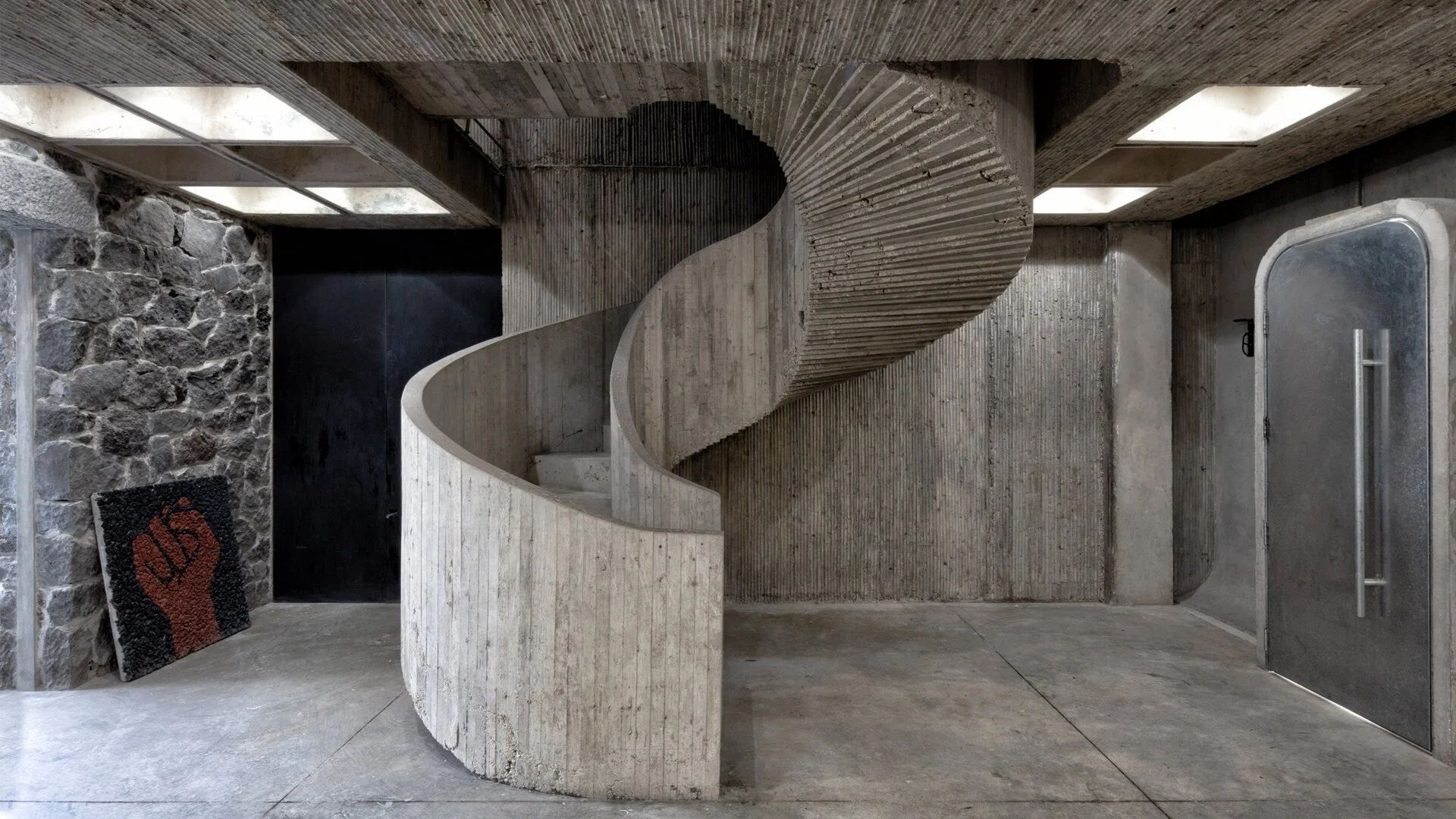
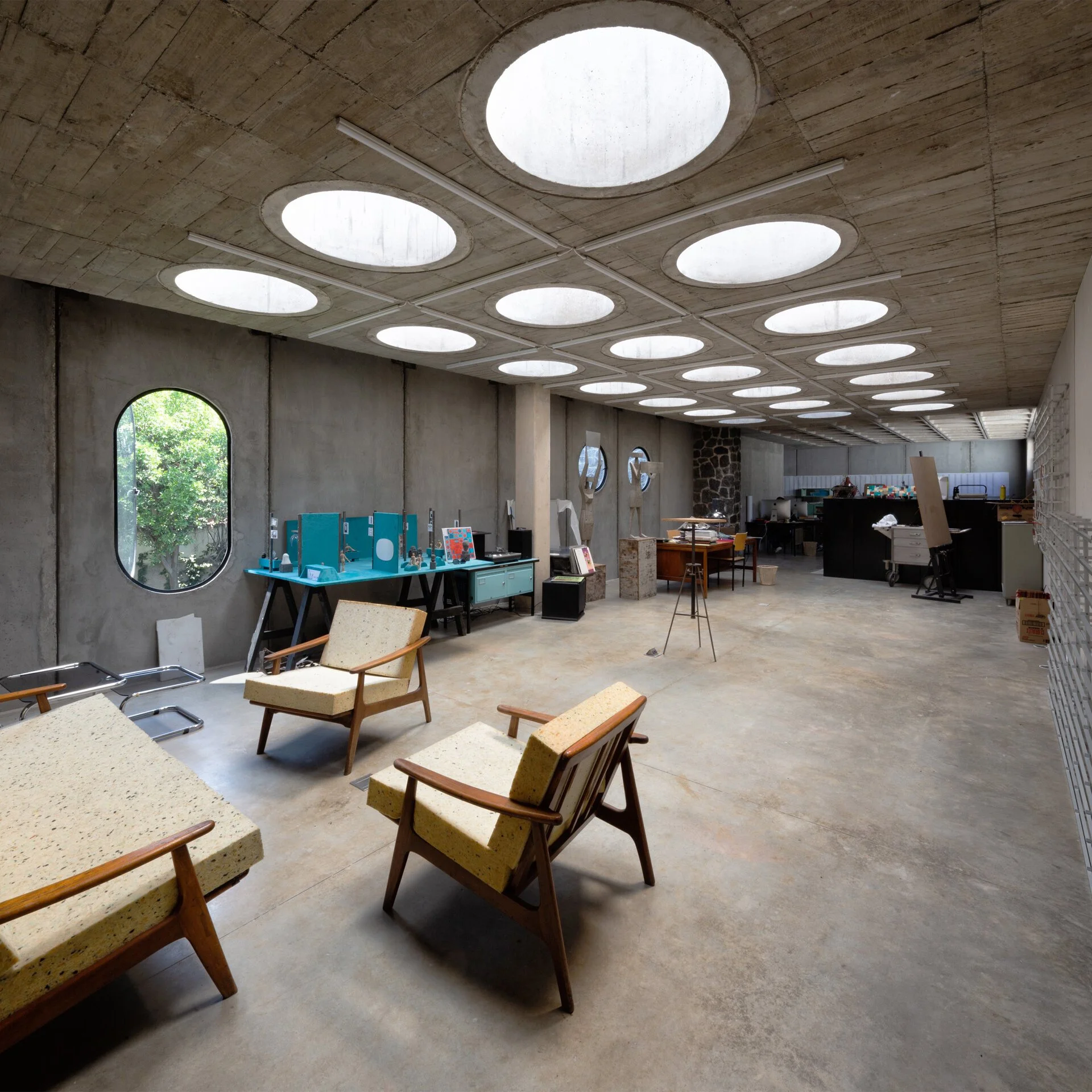
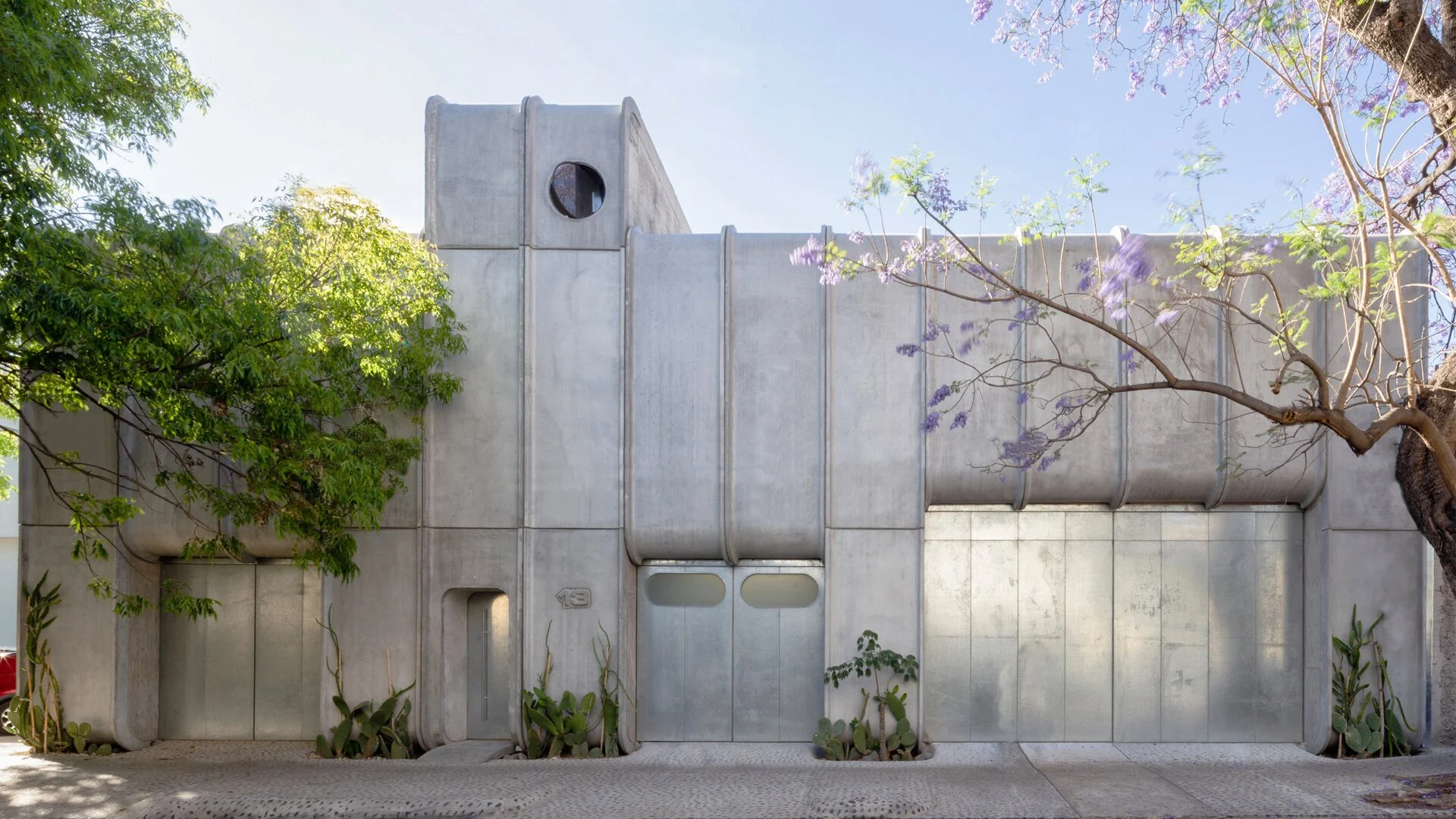
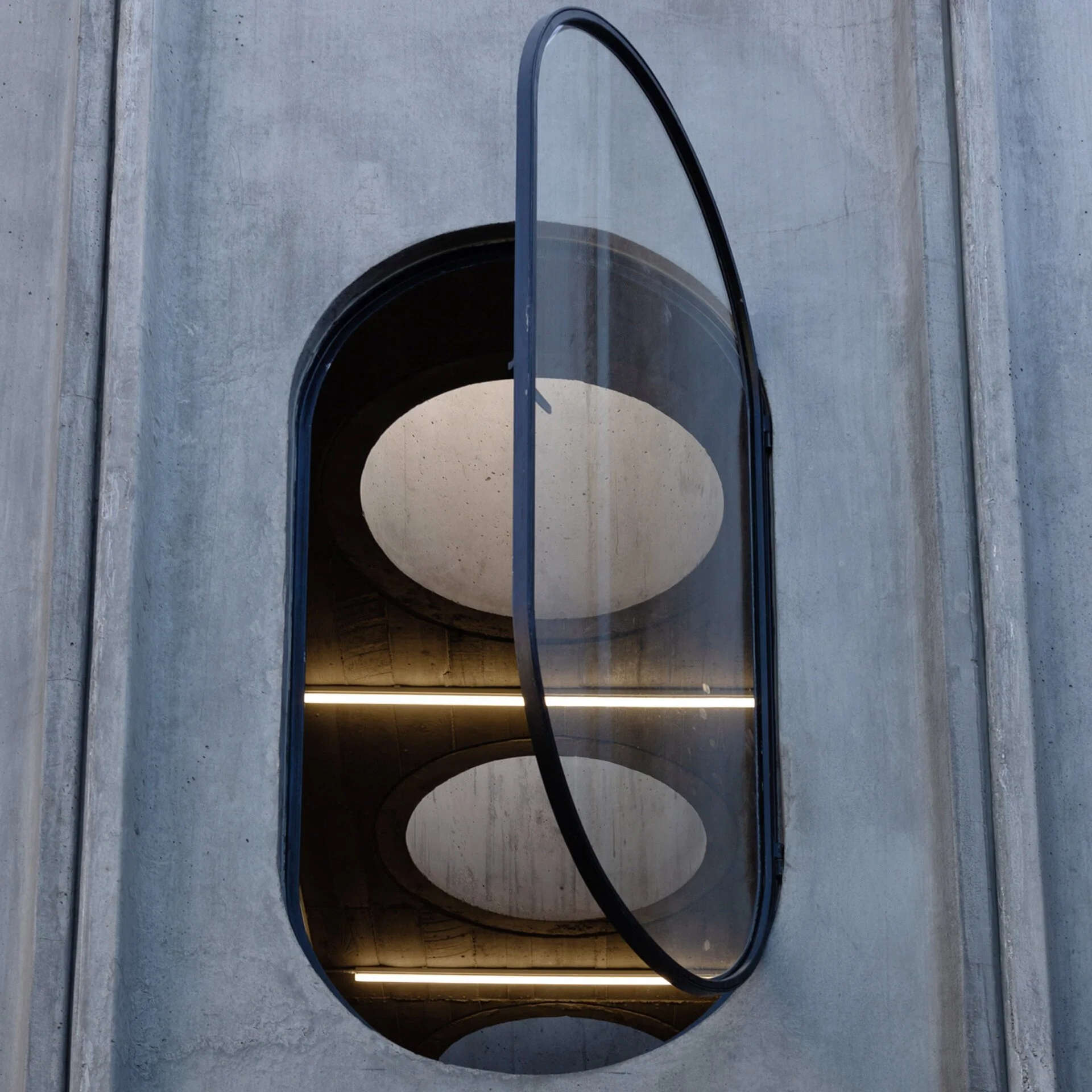
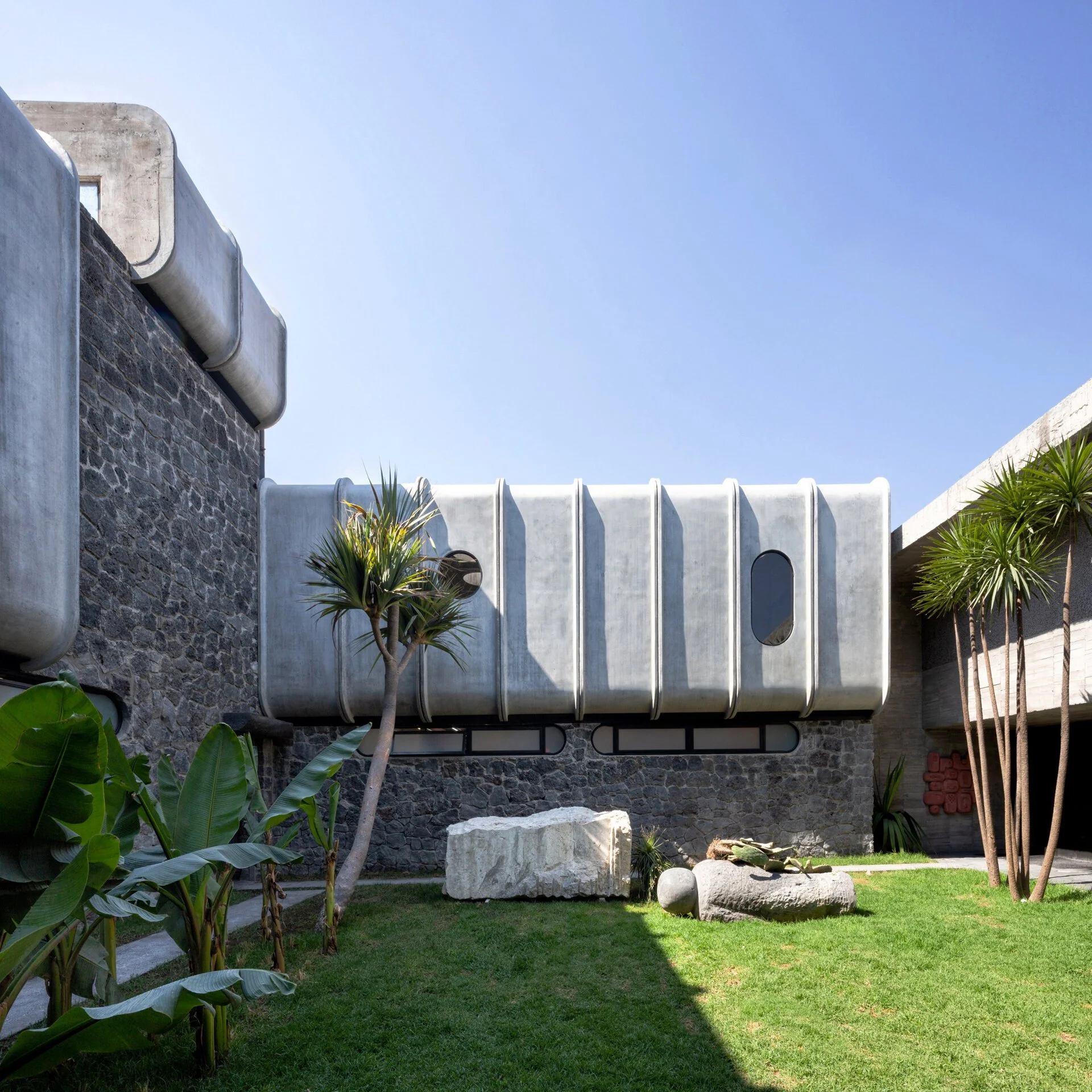
Design Principles
The architectural response centers on a brutalist design language that makes a bold statement within the colonial fabric of Coyoacán. This choice represents a deliberate counterpoint to the neighborhood's historical character, asserting a contemporary identity while engaging in dialogue with its surroundings rather than mimicking them. The brutalist vocabulary speaks to the raw, transformative nature of Reyes's sculptural practice, where heavy materials are worked and shaped through intensive physical processes. The architecture thus becomes an extension of the artistic work it houses, reflecting the materiality and labor inherent in the creative process.
The building manifests as a monolithic structure crafted in grey concrete, executed through artisanal craftsmanship that honors the handmade quality central to Reyes's own practice. The development process included extensive experimentation, with several mock-ups created to study different patterns and explore various precast materials. This iterative approach to the concrete work ensured that the final execution achieved both technical precision and aesthetic richness, transforming what might be perceived as industrial material into something bearing the traces of human craft and careful deliberation.The project to design Reyes's studio and workshop emerged from a complex set of requirements that reflected both his artistic needs and his ethical commitments. The location in Coyoacán, a colonial neighborhood rich in architectural history, presented the challenge of creating a contemporary statement that would respect its context while asserting a bold architectural identity. The studio needed to accommodate heavy machinery for working stone, which drives significant electrical consumption requiring sustainable solutions.
Sustainability and community responsibility are woven throughout the design through integrated systems addressing multiple environmental and social concerns. The electrical consumption demands created by heavy stone-working machinery are offset through implemented reduction systems, acknowledging that artistic production carries environmental costs that must be actively mitigated. Rainwater harvesting and reuse systems further reduce the building's environmental footprint while demonstrating practical approaches to resource conservation. Acoustic comfort for surrounding houses ensures that the intensive work of sculpture production remains contained, respecting the residential character of the neighborhood and maintaining good relations with the community. These interventions demonstrate that bold architectural statements need not come at the expense of environmental and social responsibility, but can instead integrate these values into their fundamental expression, creating buildings that are simultaneously assertive and considerate, monumental and responsive.
